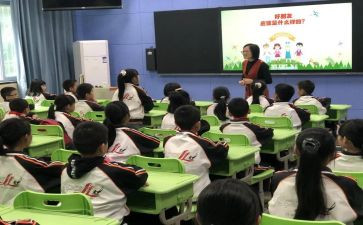在制定教案时,教师可以参考同科目的优秀案例,以提升自身水平,在课堂教学中,教案的有效性依赖于其与学生实际学习情况和进度的紧密结合,以下是心得范文网小编精心为您推荐的冀教版四年级英语上册教案6篇,供大家参考。

冀教版四年级英语上册教案篇1
教学目标:
1.能听懂、会说、会读交际用语:welcome to … what are these/those?they’re …are these/those…? yes, they are./no, they aren’t
2.能听懂、会说、会读词汇:they’re=they are, pig, cow, chicken, duck
3.能听懂、会说、会读、会写词汇:farm, they, pig, apple, those
4.能熟练朗读对话或表演对话。
教学难点:
1.句型:what are these/those? are these/those …?的语调和用法。
2.词汇:farm, they, those, chicken, apple, pear的读音;a和an用法的区别;名词复数形式。
教学准备:
动物头饰,水果、动物卡片,ppt、学生学案
教学过程:
step1 before class
listen and sing a song:old mac donald had a farm
step 2. warming up
1. free talk.
t:hello,boys and girls.i’m your new english teacher,miss wang.
i’m very glad to be here.
i want to be your friend.
ok,firstly,i want to know your names.
t:what’s your name? who’s your friend?
nice to meet you.welcome to my class.(ppt)
s:thank you.
2. learn to say:welcome to …
(请学生先听懂“欢迎来到我的课堂”并进行回答,然后学会自己说“欢迎来到我的班级”,向上课老师、听课教师说)
3. lead-in and learn
t: boys and girls,we sang a song before class.we were very happy.
we saw a lot of animals there.right?(ppt出现农场画面)
they were on the farm.
learn ‘on the farm’。
step 3. presentation and practice
1.learn : what are these/those? and ‘pigs/cows/ducks/chickens’
(1)what are these?they’re pigs.
(2) are these pigs?no,
what are these?they’re cows.
(3) what are those?they’re …s.
are those …?yes./no.
(同步出现动物卡,结合句型学习生词。)
2. let’s say.a chant
these,these. what are these?
pigs,pigs. they’re pigs.
those,those. what are those?
cows,cows. they’re cows.
step 4.text-learning
1.task 1 : let’s listen! who is on the farm too? (谁也在农场?)
2.task 2 : listen and tick:what’s on the farm?
3,task 3 : let’s watch: (欣赏动画,将农场上的动植物摆在正确的位置。)
a. pigs
b. cows
c. apples
d. pears
4.task 4 : let’s follow.(跟读) ☆注意语音语调☆要读出感情哦
5.task 5 : let’s read. (让我们读吧!)分角色朗读。
6.task 6 : farm show! (农场秀!)(发挥想象创编并表演,说得越多越好哦!)
t:it’s great fun to visit a farm. liu tao and mike have great fun on thefarm. it’s great fun to have a farm,too.
30 years later, you’re grown up. someone may have a wonderful farm. wouldyou please show your friends around your farm? make a dialogue in groups.
a model:
a (farmer):look! i have a farm! look! they’re pigs!/they’re cows! welcometo my farm, mr …!
b: oh, thank you! my good friend, mr/miss …
a: nice to see you!
b: nice to see you! what are these?
a: they’re … they’re lovely!
would you like a …?
b: yes, please. thank you! i like… what are those?
a: they’re …s. they’re sweet. would you like … ?
b: yes, please. it’s yummy!
a: do you like my farm?
b: yes. it’s great!
a: welcome to my farm next time!
b: thank you. bye-bye!
a: goodbye!
step 5. ticking time
ticking time
i can talk about things on a farm.
i can act things on a farm.
step 6. homework
1.read story time for 5 times.
2.make your performance better.
3.visit a farm if it’s possible.
板书设计:
unit 7 on the farm
--what are these/those?
--they’re …s.
--are these/those …s?
--yes./no,they’re …s.
冀教版四年级英语上册教案篇2
教学目标:
1、学习四个名词sunglasses, gloves, umbrella, scarf。
2、在a部分对话的基础上,运用本课时及a部分学过内容进行实际的交际活动。根据不同的天气情况,自己搭配不同的服饰。
教具准备:
ppt课件、单词卡片。
教学重点:
本课时的四个单词。
教学难点:
在实际情境中运用词汇,根据不同的天气选择正确的服饰并交流。
教学过程:
一、warming up
1、let’s sing.(尽快将学生从课间拉到英语学习中来。)
2、review.(复习第五单元一组“clothes”单词,用旧知来引出新知。)
3、let’s group.(将复习过的单词进行分类,有利于之后更好地开展对话。)
二、presentation
1、a.通过两个对话完成购物。
b.shopping bought a pair of shoes and a hat.now,she wants to go back home.引出“umbrella”教学。
c.放“umbrella”于对话中的操练。
2、晴天引出“sunglasses”教学,然后对话操练。
3、下雪引出“scarf”和“gloves”教学,通过对话操练。
三、consolidation
1、take a trip.(通过百度查找天气,最终shopping选择newyork去旅游。)
shopping:it’s hot. so i put on my t-shirt.
(让学生明白旅游前如何做好准备,不同的天气要穿不同的衣服。)
2、group work.
summer holiday is coming.let’s take a trip.
(通过小组合作,让学生了解7、8月份各地的天气情况并做选择,最后根据选择的城市准备不同的服饰。)
四、布置作业
1、听录音,熟读p59。
2、完成p59的表格,并说一说。
3.、(自选)和父母亲讨论暑假旅行安排,说说需要的物品。
五、板书设计
pep4 unit6 a let’s learn
umbrella
scarf
gloves
sunglasses
六、教学反思
在进行group work的时候对学生的要求并不是很清楚,有些同学不太清楚课堂学习的要求。课堂上由于第一次参加讲课演示紧张导致原先的教学计划被打乱,原先的教学步骤被打乱,在课程内容上有点急,没有很好的阐述我的教学方法和理念,希望下次能够更好的表达我的教学方法,和新的教学理念。在课堂教学中,教学用语的使用不是很流利,在课堂中有些地方想表达的内容自己表达的不是很清楚,不能很好的用简单的语言表达出来,我想这也是一名新教师和老教师之间的差距。回校以后我会像,学校优秀的老教师们,如何用最简单,学生最容易接受的语言来表达教学内容。经过这次的教学评比,我看到了自己与其他优秀教师的差距,看到了自己的不足。更学习到和接受到了全省优秀教师们的教学方法,教学经验,教学理念。对我的触动很大,也让我对以后的教学表达指明了一条道路。感谢这次的活动,让我们这些新接触教师岗位的新人们,认识到自己的不足。同时,也给我们新人提供了表达自己新教学理念的平台。
冀教版四年级英语上册教案篇3
一、指导思想
以素质教育为根本宗旨,以培养学生创新精神和实践能力为重点,充分遵循四个“有利于”思想,即:有利于发挥学生的潜能,有利于提高学生的全面素质,有利于提高学生的自学能力,有利于培养学生的创造性思维和创造能力。
二、教学任务:
激发和培养学生学习英语的兴趣,使学生树立自信心,养成良好的学习习惯和形成有效的学习策略,发展自主学习的能力和合作精神;使学生掌握一定的英语基础知识和听、说、读、写技能,形成一定的综合语言运用能力;培养学生的观察、记忆、思维、想象能力和创新精神;帮助学生了解世界和中西方文化的差异,拓展视野,培养爱国主义精神,形成健康的人生观,为他们的终身学习和发展打下良好的基础。
三、教学目标
1、能按四会、三会的要求掌握所学单词。
2、能按四会要求掌握所学句型。
3、能使用日常交际用语,活用四会句型,进行简单的交流,做到大胆开口,发音正确。
4、能在图片、手势、情境等非语言提示的帮助下,听懂清晰的话语和录音。
5、初步培养良好的书写习惯,能做到书写整洁、规范。
6、养成响亮清晰读英语、说英语的习惯,认真模仿语音、语调,以培养语感。
7、能在完成某个任务(如涂色,小制作)的过程中学会相关的词句,并且培养动手能力。
8、能演唱已学过的英语歌曲,诵读已学过的歌谣。
四、教学重点难点
1、能按四会、三会的要求掌握所学单词。
2、能按四会要求掌握所学句型。
3、能使用日常交际用语,活用四会句型,进行简单的交流,做到大胆开口,发音正确。
4、能在图片、手势、情境等非语言提示的帮助下,听懂清晰的话语和录音。
5、初步培养良好的书写习惯,能做到书写整洁、规范。
五、学生分析
四年级的大部分学生对英语有着较浓厚的学习兴趣,但也有少数学生由于遇到困难,学习兴趣会随之减弱。尤其从这学期开始,对学生又提出了新的要求:培养听、说、读、写的技能。所以我要面向全体学生,以学生的发展为宗旨,始终把激发学生的学习兴趣放在首位,引导学生端正学习态度,掌握良好的学习方法,培养学生良好的学习习惯。
六、主要教学措施
1、以活动为课堂教学的主要形式,设计丰富多彩的教学活动,让学生在乐中学、学中用,从而保证学生英语学习的可持续性发展。
2、通过听、说、读、写、唱、游、演、画、做等形式,进行大量的语言操练和练习。
3、将直观教具和电教手段,多媒体课件相结合,培养学生良好的朗读习惯,打下良好的语音语调基础。
4、设计全面、高效的课外作业,培养学生良好的书写习惯,做到整洁、规范、正确地书写。
七、教学进度安排
冀教版四年级英语上册教案篇4
一、说教材
1)语言知识目标:
1、熟练掌握单词study、kitchen、bathroom、bedroom、living room的汉语和拼写
2、理解let’s do部分的内容
2)语言技能目标
1、能够简单描述自己的家,结合学过的语言描述各个房间及室内家具陈设的名称。
2、能够听懂并发出一些指令,比如:go to the living room/watch tv、read a book……
3)情感、文化目标
1、培养学生对家的热爱、鼓励学生大胆设想自己未来的家居
2、了解西方国家的房屋结构,以及各部分的名称。
二、关于教法和学法设计
1)教法设计
本课时我采用游戏方式进行学习,运用贴画进行奖励,让学生在听、说、读各方面都融入进来,增加学生的竞争意识,使课堂教学进行到高潮。
2)学法指导
观察图片,利用动作进行理解,实行团队合作学习。增强团队精神。
三、教学程序设计
1、先进行日常口语交流,活跃课堂气氛。
2、然后复习旧知识为新知识的呈现做铺垫。
3、图片展示,运用句子“what are they?”来问答呈现新单词,听录音,力求学生做到“眼到、口到、手到、心到”。
4、游戏巩固:运用竞赛和小老师的方式进行操练。
5、let’s do部分,教师动作示范让学生理解。
6、配对游戏,小老师命令两名学生配对。
7、家作布置。
冀教版四年级英语上册教案篇5
教学内容:
look and write
教学目标:
1.知识目标:学习用动词来描述动作
2.能力目标:运用标志来发命令
3.情感目标:培养学生遵守纪律的习惯
重点难点:
using imperatives to express prohibitions
教学准备:
tape, radio, some picture cards
教学过程:
一、warming-up
1. daily talk
2. act out the dialogue
二、revision
1. some phrases: in the pond on the river under the tree
2. some drills: where is the fountain? it’s near the tree. where are thebirds? they’re in the aviary.
3. ask and answer: where is the…? it’s in the…
三、presentation
1. teaching the sign “ close the door” open the door of the classroom, thendraw a sign: close the door on the board. say and write: close the door. promptan individual student to close the door. introduce: a sign show some signs tothe students
2. draw other signs in look and read on one side of the board. don’t feedthe birds. don’t pick the flowers. don’t climb the trees. don’t walk on thegrass. don’t play in the pond.
read these signs
look and say
guessing game
3. draw a park scene on the board, then practice the signs
talk about the park
ask students to copy the signs you have drawn on the board and put them inthe right places in the park.
encourage the students to include other signs that they might find in thepark.
四、consolidation
1. listen and repeat
2. have the students work in pairs to write the numbers of the signs in theappropriate red circles.
3. distribute a copy of photocopiable page 36 to each student.
find the correct signs.
冀教版四年级英语上册教案篇6
一、课时目标:
1.复习一般过去式和一般现在式第三人称单数的动词变化。
2.掌握英文书信的一般格式。
3.能够准确运用下列句型:
where does she live? she lives in...
it was my birthday on saturday.
we were at buckingham palace.
二、课时重、难点简析:
1.一般现在式第三人称单数的动词变化+(e)s
where does she live? she lives in...
学生对此语法掌握的不扎实,虽然2-3年级都有学习和复习,但是在实际运用中会忘掉动词的相应变化。
2. where was he/she?
特殊疑问句和第三人称单数的动词变化放在一起出现,对应学生来说要通过多练习才能掌握。
三、学生认知分析:
1.学生对英文书信的.格式有了解。
2.对于一般过去式和一般现在式的第三人称单数的动词变化有了解。
3.对于大地点(城市、国家前用in,在小地点home/park等前用at)都学过、练习过。
四、教学准备:
1.学生:预习课文;拿自己过生日时的照片
2.老师:课件、单词卡片、照片
五、教学过程:
step 1 warm-up
good morning,boys and girls.
how are you?
did you have a good summer holiday?
what did you do in summer holiday?
i read some books,watched the film and did many other things.
what about you?
you did so many things in summer holiday. the summer holiday passed. now we‘re having class. we’re having an english class.
who can ask me?
what are you/is he/is she doing?
i‘m/she’s/he‘s …
step 2 lead in
s:what are you doing?





